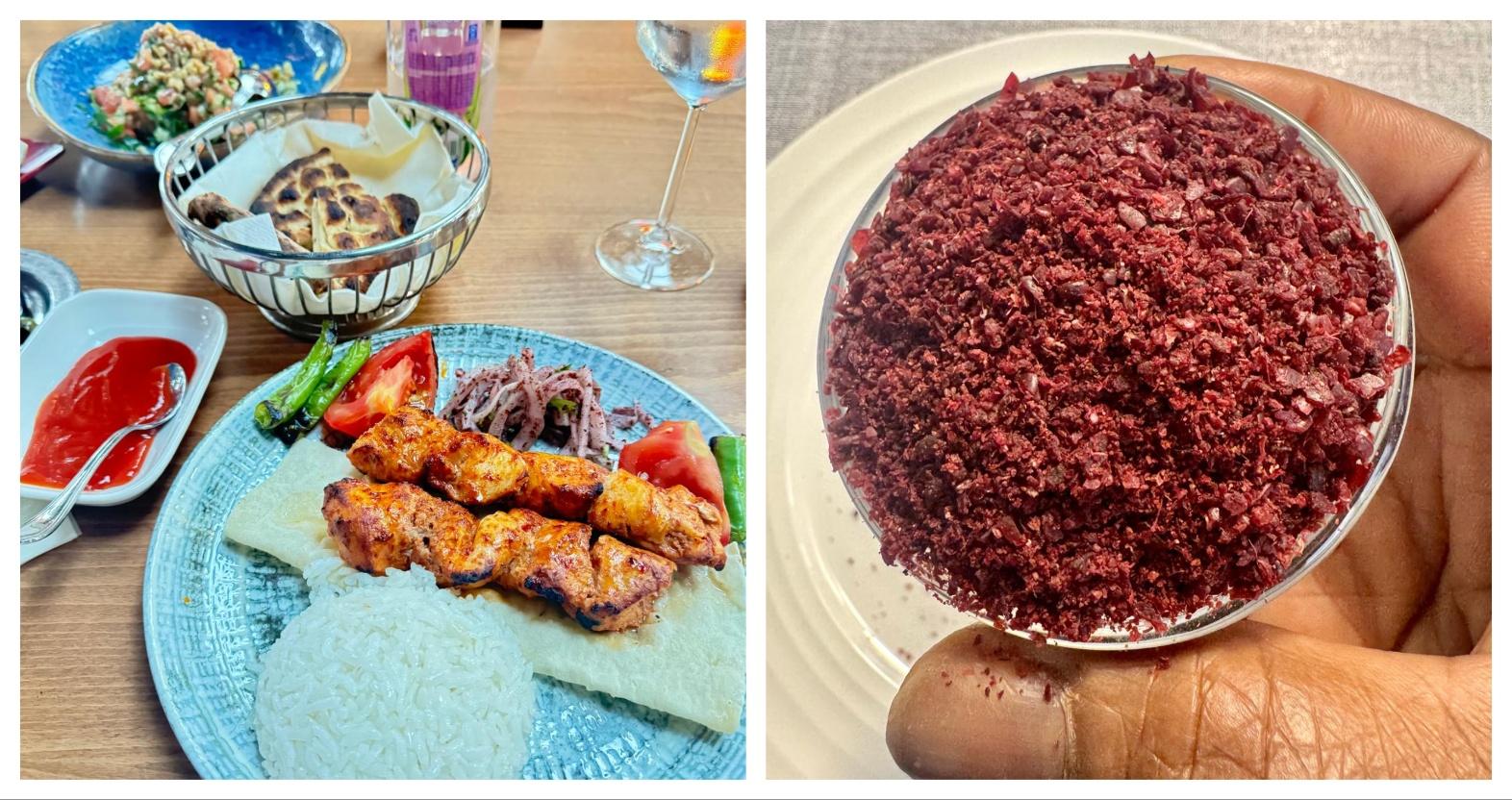Subscribe to trusted local news
In a time of both misinformation and too much information, quality journalism is more crucial than ever. By subscribing, you can help us get the story right.
- Subscription costs less than £1 a week with an annual plan.
Already a subscriber? Log in here.
01
Feb
Yemi's Food Stories : Sumac - the zesty secret in your kitchen

Yemi Adelekan is a food writer and blogger who was a semi-finalist in the 2022 series of BBC TV’s Masterchef competition.
Every Saturday Yemi writes on the Stray Ferret about her love of the area’s food and shares cooking tips – please get in touch with her if you want her to review a restaurant, visit your farm, taste the produce you sell or even share a recipe.
A few years ago, I discovered sumac and it changed the way I approached cooking. I wasn’t convinced when I first tasted the raw spice but it grew on me as I began to explore how the flavour profile changed with cooking processes. The deep red, citrusy spice quickly became a staple in my kitchen, often replacing lemon when making fish dishes.
What started as a casual experiment turned into a deep appreciation for its versatility. My love for sumac was deepened during my last summer holiday in Istanbul, where I was served sumac onions with grilled kebabs. The burst of tangy brightness they added to the dish was unforgettable.
Since then, I’ve found new ways to incorporate sumac into both sweet and savoury dishes including cooking fish in a sumac and Pul Biber butter.
The origins and characteristics of sumac
Sumac comes from the dried and ground berries of the Rhus coriaria plant, native to the Mediterranean and Middle Eastern regions. It has been used for centuries, for its culinary appeal and medicinal properties. Historically, sumac was valued for its antioxidant-rich nature and was often used in herbal remedies.
What makes sumac stand out is its tart, slightly fruity flavour, reminiscent of lemon zest but with a deeper, more complex earthiness. Unlike vinegar or citrus, sumac brings acidity without adding liquid, making it perfect for seasoning dishes without changing their texture. Its striking crimson hue also makes it visually appealing, adding a pop of colour to any meal.
Brighten Your Savoury Dishes
Sumac is a game-changer in savoury dishes. Its acidity cuts through rich flavours, enhancing meats, seafood, and vegetables with ease. Here are a few ways I love using sumac in savoury cooking:
• Sumac Onions: This is a staple in Turkish and Middle Eastern cuisine, these are thinly sliced onions massaged with sumac, salt, and a drizzle of olive oil. Served alongside grilled meats, sumac onions add a fresh and tangy contrast that elevates the entire meal. I am not a huge fan of raw onions so I pan-fry my onion on high heat to get a bit of caramelisation before adding the sumac
• Fish and Seafood: Since sumac has a natural lemony flavour, it’s an excellent alternative to citrus in seafood dishes. A light dusting of sumac on grilled salmon or pan-seared white fish brings a lovely tartness that enhances the natural sweetness of the fish. I use sumac and dulce sea weed to season the emulsion or sauce and introduce a vibrant colour
• Roasted Vegetables: Tossing vegetables like cauliflower, potatoes, or eggplant with olive oil, sumac, and sea salt before roasting results in a beautifully caramelized, flavour-packed side dish.
• Grilled Meats & Marinades: Sumac pairs exceptionally well with lamb, chicken, and beef. Adding sumac to dry rubs or marinades, along with garlic, cumin, and olive oil, creates deeply flavoured, succulent meat. Use Sumac and roasted garlic butter to finish grilled meat.
• Hummus & Dips: A sprinkle of sumac over hummus or Sumac and chilli oil drizzled on labneh adds a touch of brightness and an extra layer of flavour.

Sumac onion central to a food platter
Sweet Surprises: Sumac in Desserts
While sumac is most commonly used in savoury dishes, its tart and slightly fruity notes make it an unexpected but delightful addition to sweet treats.
• Sumac Berries: Tossing fresh strawberries with a pinch of sumac and black pepper with honey enhances their natural sweetness while adding a subtle tang.
• Baked Goods: A dash of sumac in shortbread cookies, fruit crumbles, or lemon bars introduces a unique twist, cutting through sweetness with a pleasant acidity.
• Sumac and Chocolate: Sumac pairs beautifully with dark chocolate, balancing its bitterness with a touch of citrusy brightness. A sprinkle of sumac on chocolate truffles or brownies creates an intriguing contrast.
• Refreshing Beverages: Infusing sumac into syrups or steeping it in hot water with honey and mint makes a refreshing, slightly tart drink.
I love cooking without boundaries and believe cooking should be an adventure. sumac is one of those ingredients that encourages creativity in the kitchen. Its ability to brighten flavours without overpowering them makes it a must-have in my spice collection.
For me, sumac represents more than just a seasoning; it’s a reminder that the simplest ingredients can completely transform a dish. My food philosophy has always been about creating food that is ‘yummy by design’ - layering flavours, textures, and memories to make every bite count.
If you haven’t tried sumac yet, consider this your invitation to explore its versatility. Wherever you need of acidity, consider sumac. Your taste buds will thank you!
0